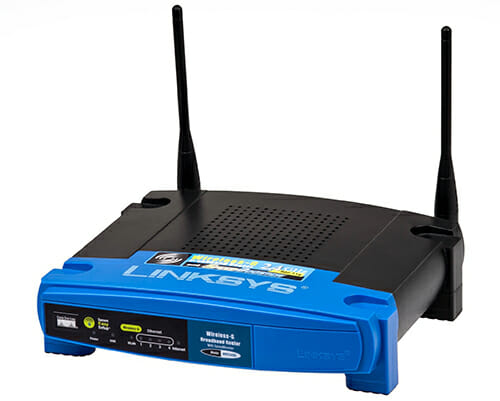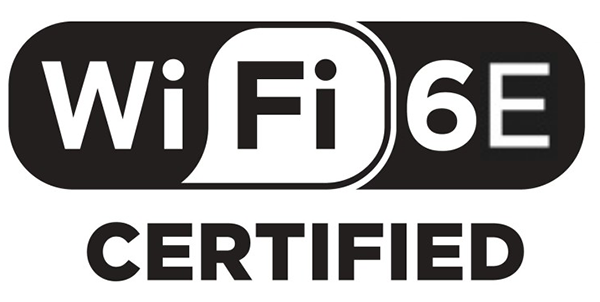WiFi 6 Vs WiFi 6E – What’s the Difference?

The extended and continuous usage of wireless devices has led to a massive congestion where ongoing traffic has problems like connection stability or an overall loss of speed.
By today’s standards, that is unacceptable and even though we have had recent innovations in the world of wireless communication, there was a need for a new standard, or in this case, an extension of an existing one.
WiFi 5 was already common in most of the world when WiFi 6 was released, in 2020. However, even WiFi 6, despite broadening the available radio frequencies and making use of new technologies, wasn’t able to satisfy a rapidly developing market.
WiFi 6E was only recently put into mass production, and as of 2022, adoption has been relatively slow.
Recalling what innovations both of them have brought will help understand the slow deployment process.

An older WiFi router. Most WiFi 6E commercial routers have around 6 to 8 antennas and take on a gamer aesthetic.
WiFi 6 – Major Stability Improvements
WiFi 6 was first specified in 2020, but was approved for deployment in February 2021. WiFi 6 promised to have better data rates and capacity, lower power consumption and better performance in already congested areas. This wasn’t done through brute force but by implementing new technologies.
Orthogonal Frequency Division Multiple-Access or OFDMA
OFDMA enables faster data rates by reducing the time between transitions. This only works with WiFi 6 compatible routers and devices. Since more effective devices can make better use of their time, this allows other devices to have more bandwidth. This update alone makes WiFi 6 better than WiFi 5.
What this means in practice is that a router can support multiple devices per a WiFi band, uplink and downlink using OFDMA.
Better Data Rate Efficiency – 1024-QAM
More data rate is important, mostly because we cannot really lower the number of wireless devices in congested areas. 1024-QAM is a technology which can vary the amplitude and phase of radio waves, thus adding more data per transmission. Radio waves and their amplitudes are modified so that they are out of phase, which makes these signals able to carry more bits per hertz. This technology was already in use, but a less efficient one.
For example, WiFi 5 used 256-QAM, and this one allows an increase of data rate which is estimated to be 25% in most situations.
MU-MIMO in Both Directions
MU-MIMO was already implemented with WiFi 5, however, WiFi 6 enabled the uplink direction route, giving it more room to work with. Couple that with other technologies that are in play and we have better speeds and lower latency.
Target Wake Time – TWT
Target wake time or TWT is a feature which greatly improves the battery life of connected devices. While in the previous WiFi generation devices had to wait for their connection, thus wasting battery, WiFi 6 devices can be woken when their connection is due. This greatly saves battery life for smartphones and any other smart devices that rely on WiFi.
These technologies improve WiFi greatly, but WiFi 6E adds another domain, one strictly reserved for WiFi 6E, the 6GHz domain.

WiFi 6E devices will have this label that certifies their support of the 6E standard. Source: Wi-Fi Alliance
WiFi 6 Vs WiFi 6E – High Speed Connections
WiFi 6E is an extension of the WiFi 6 standard. It adds an entire new band which ranges from 5.925 to 7.125 GHz.
This band allows new parts of the spectrum to be explored, fourteen 80 MHz channels, to be specific, or seven 160 ones. This number doubles that of regular WiFi 6, meaning that there will be much more room for data. A couple more innovations that WiFi 6E brings are also interesting.
No Backwards Compatibility
This is a key component of why the WiFi 6 vs 6E battle will swing in the latter’s direction. Older devices, of which there are much more, will not be able to congest the 6GHz spectrum. WiFi 6E devices will not share this bandwidth with other devices, which takes us back to the early days of WiFi, but with much greater speeds.
No Sharing With Radars and TV Stations
Dynamic frequency scanning is a normal tool in regular WiFi usage, whereupon your signal will be redirected so as not to disrupt signals from TV stations, weather stations, military signals and others. Since the 6GHz bandwidth is reserved for 6E devices only, this means no sharing and no power cost for scanning and waiting.
WPA 3 – Better Security
Currently, most WiFi devices use WPA 2 protection, but with WiFi 6E, WiFi Protected Access 3 will be mandatory for all 6E devices. This will make devices from smartphones to more sensitive ones like industrial machines and computers much safer.
WiFi 6E Has Disadvantages
The first and obvious disadvantage of WiFi 6E is the requirement for completely new devices, from access points to devices such as smartphones and computers which will make use of those APs.
A completely new infrastructure is needed if WiFi 6E is going to be widespread. This is further complicated by the 6GHz bandwidth having the shortest range. This requires more devices if coverage is going to be good.
While 6GHz offers more bandwidth, putting your new long range router in the basement will not help you. The equipment which supports WiFi 6E is still new and expensive, but the overall infrastructure is lacking, so getting a device that supports 6E will be problematic outside your own home.
WiFi 6 Is Still Great
For most users except the ones who demand the highest quality connection and stability, WiFi 6E is unnecessary. Furthermore, while the features and benefits of 6E are impressive, they are still not in the infrastructure of most cities to be beneficial to the average user.
While a gaming router that supports WiFi 6E will definitely improve wireless gaming performance, unless you need an extremely fast connection, regular WiFi 6 will work just fine.